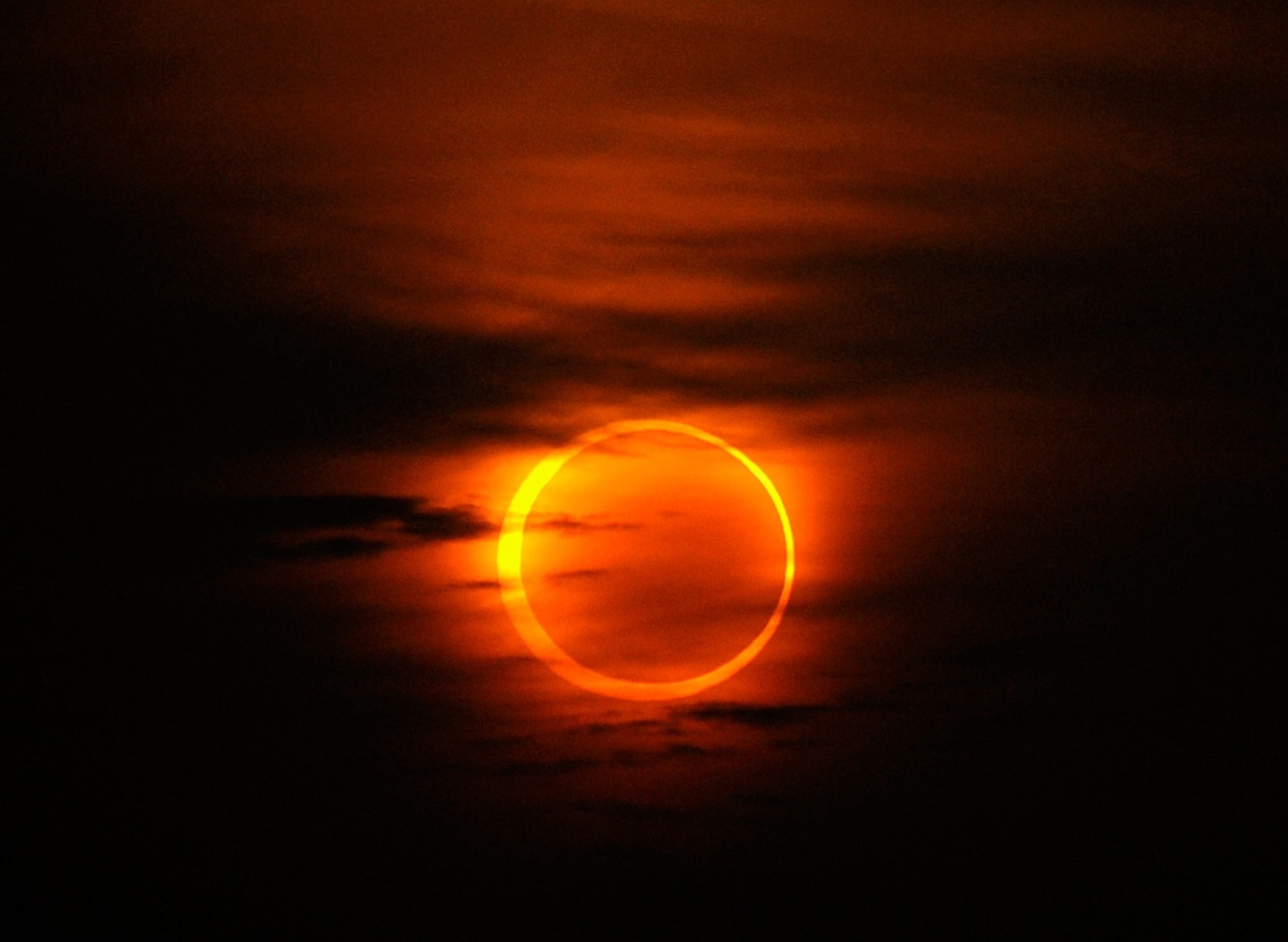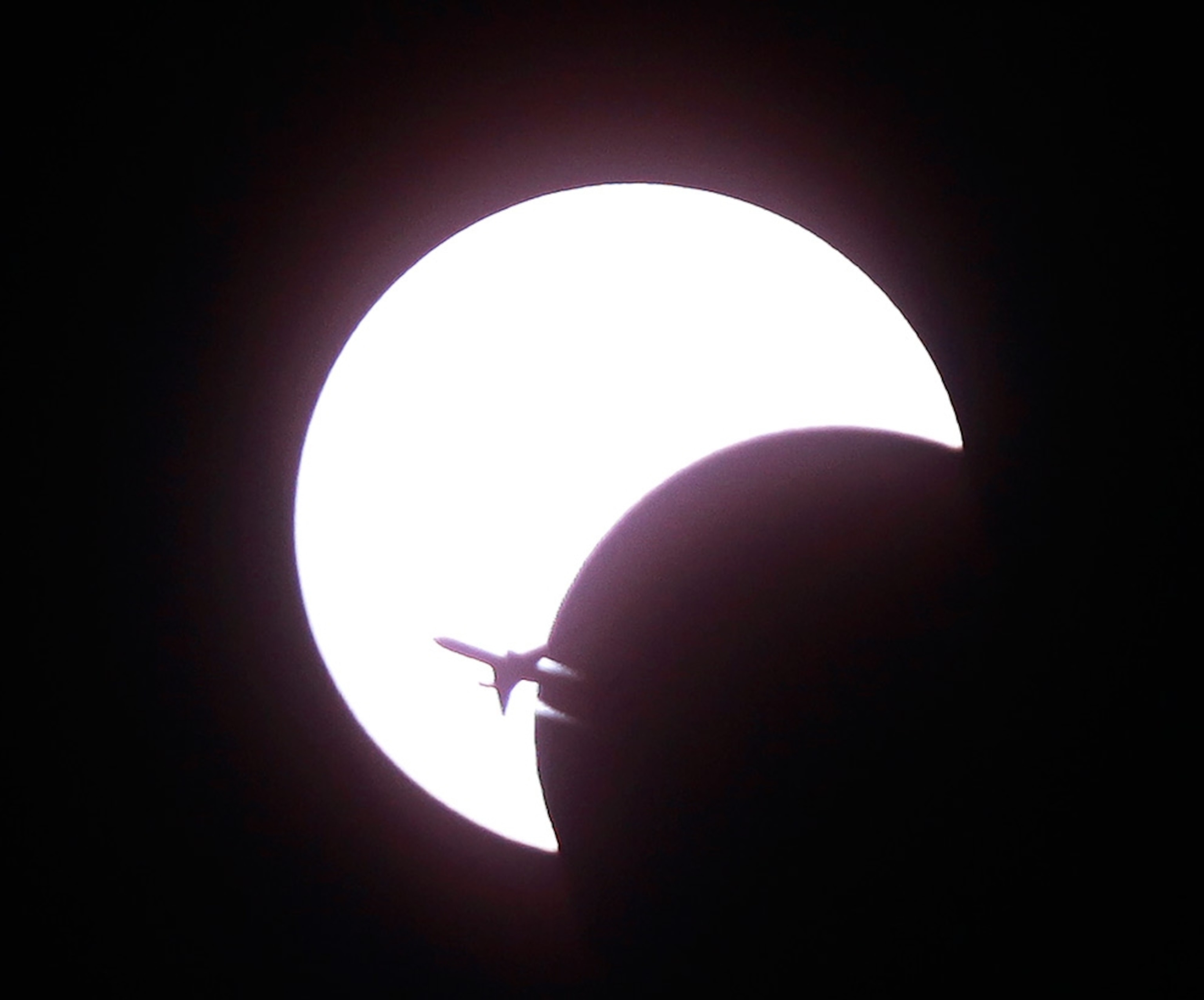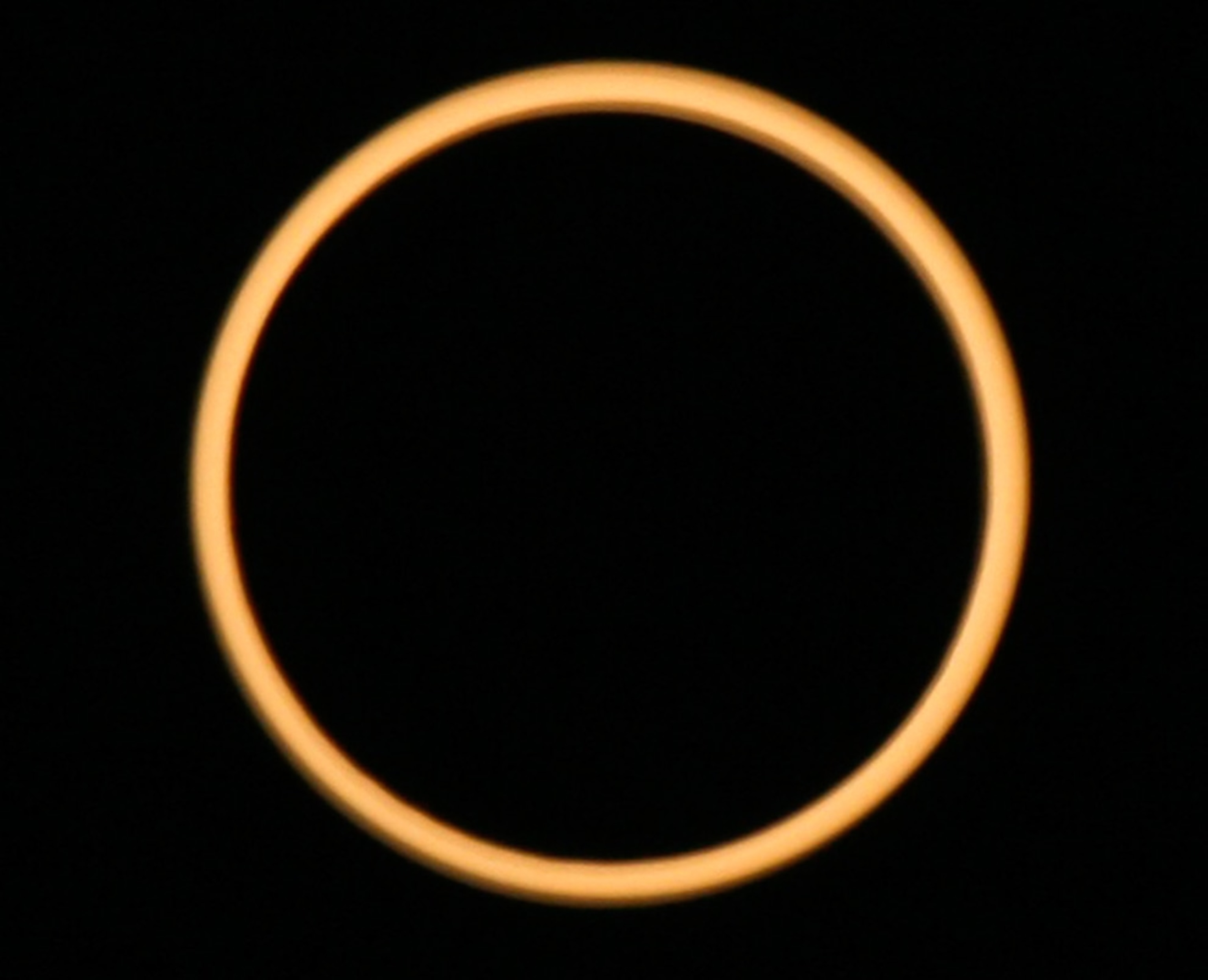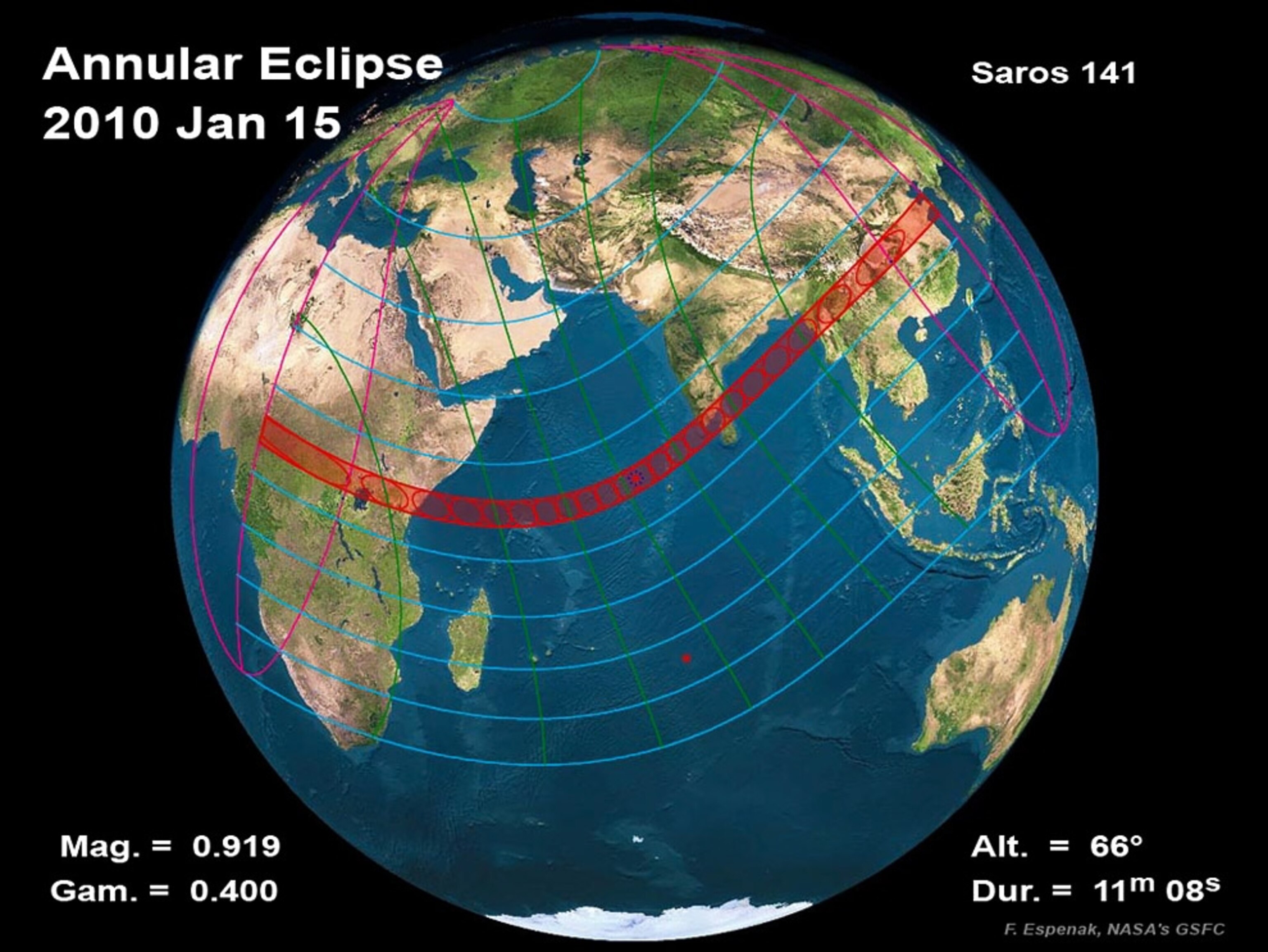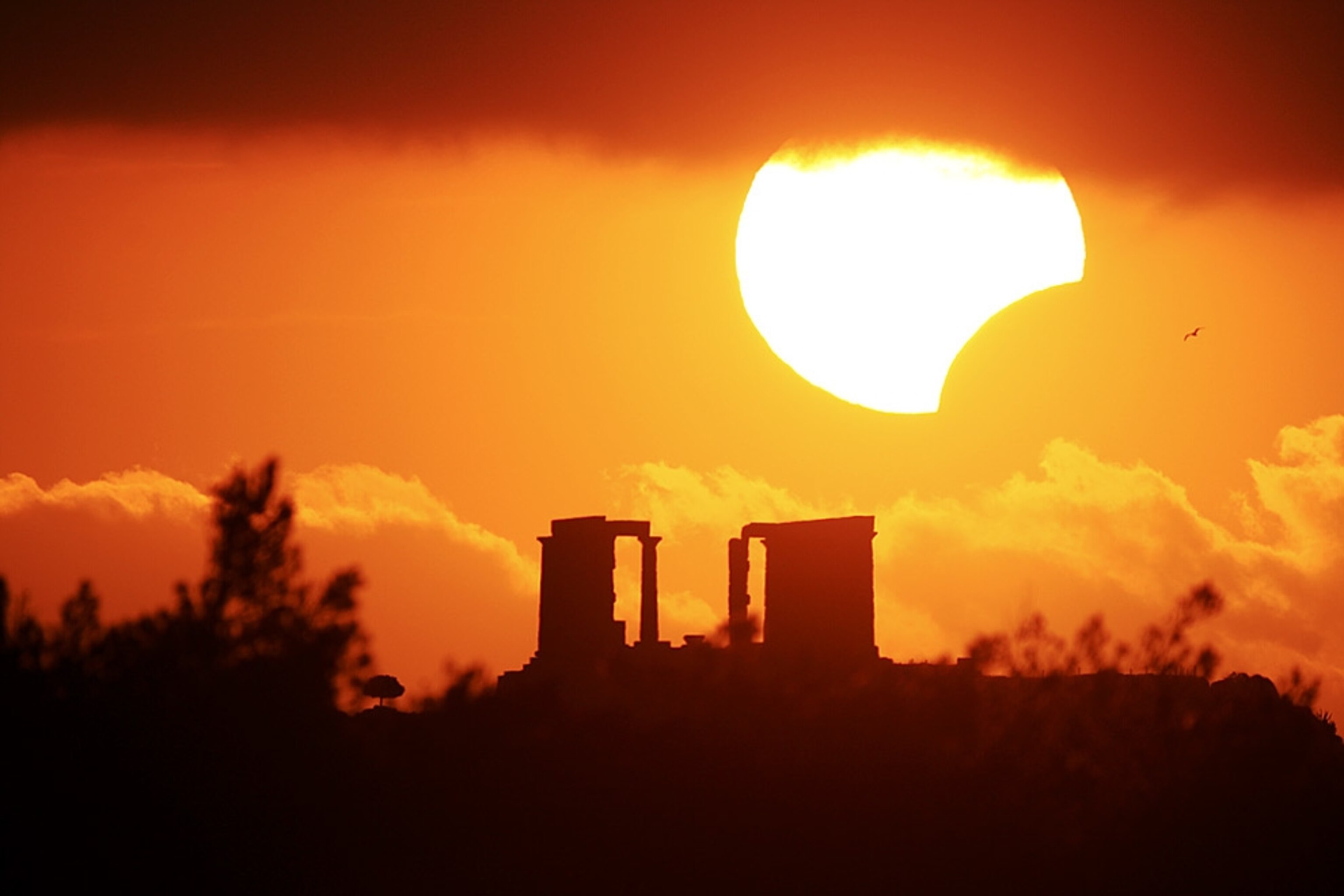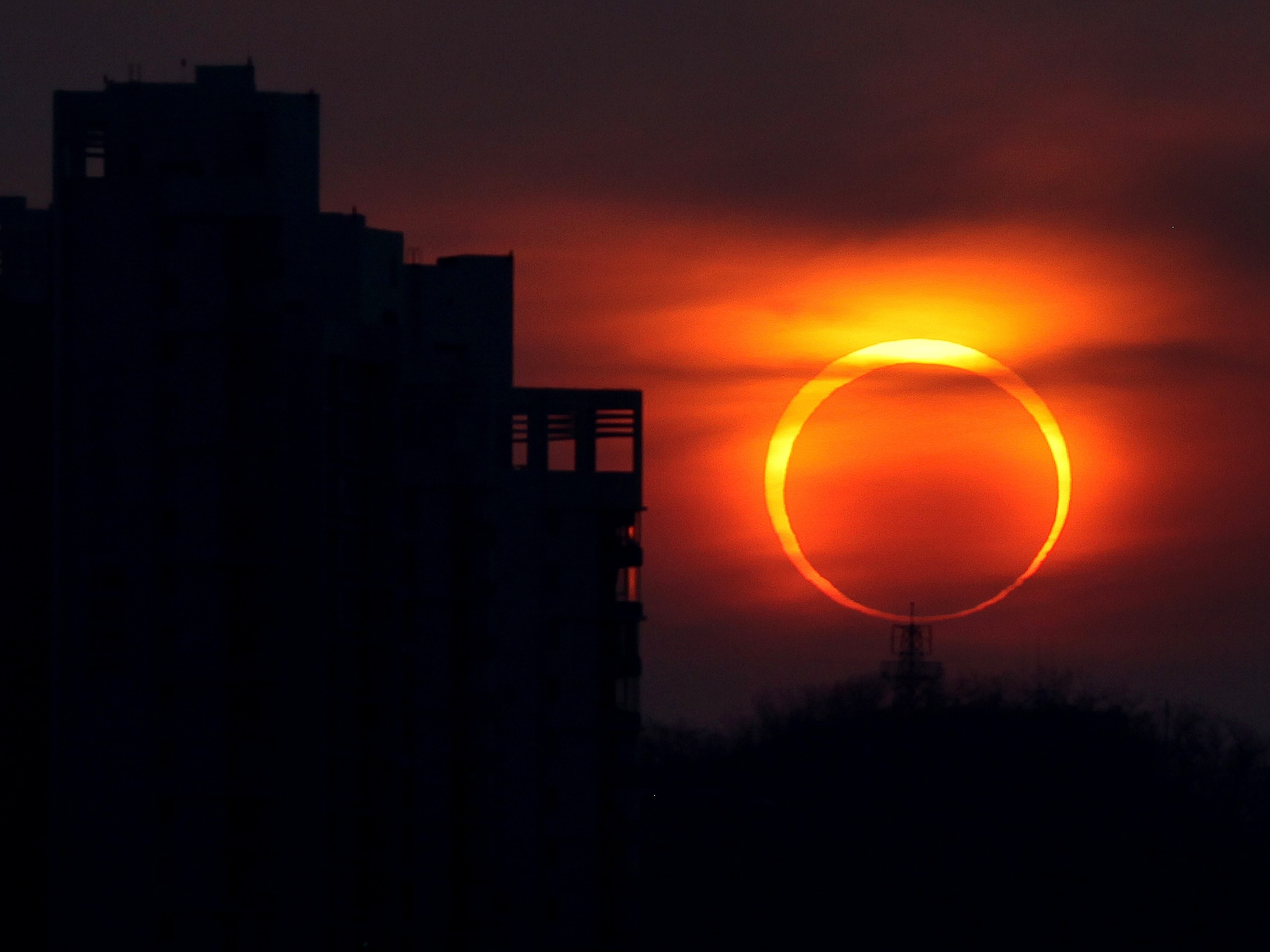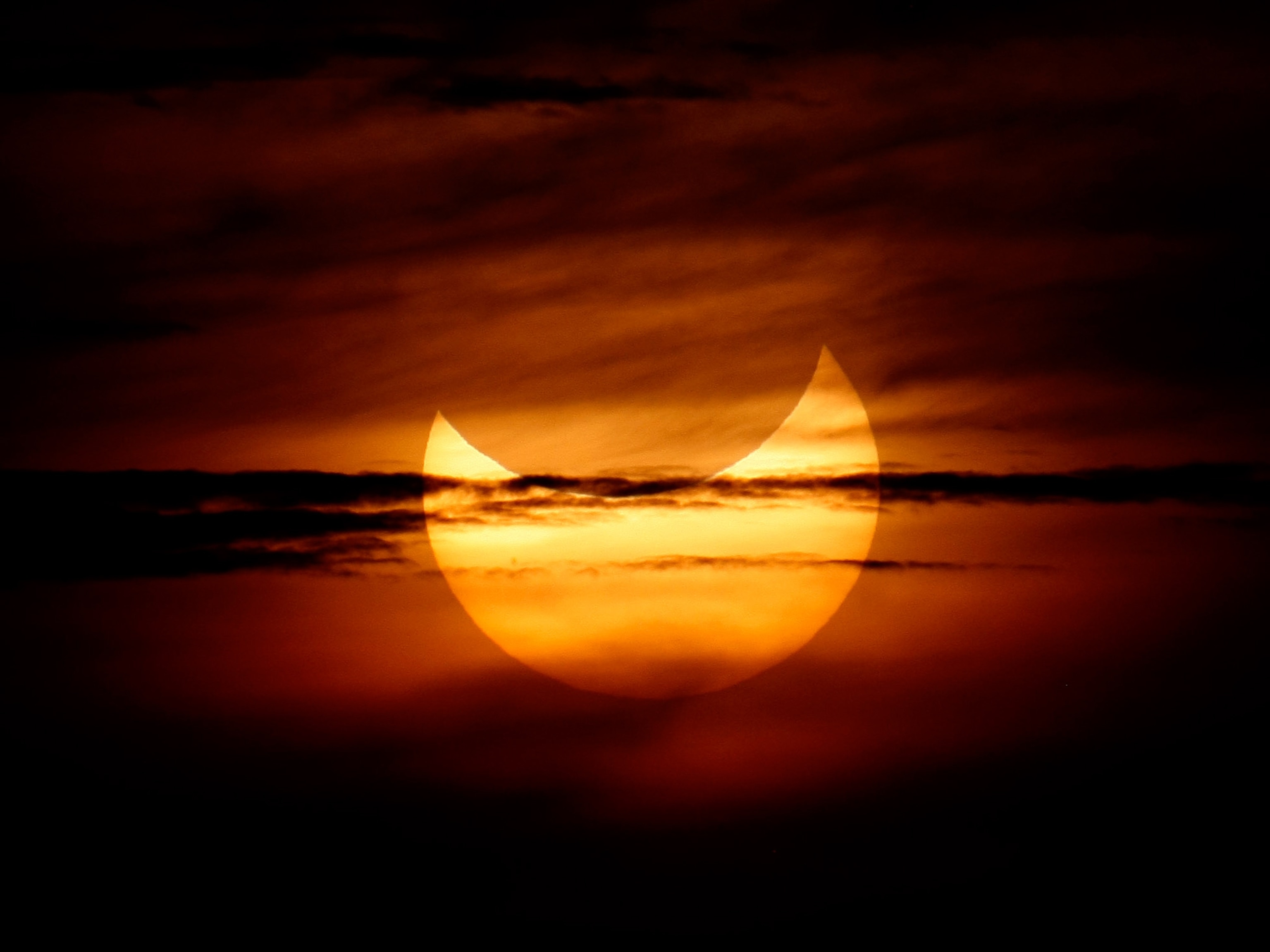Photograph from Reuters/China Daily
Eclipse Photos: "Ring of Fire" Shines Over Africa, Asia
The first solar eclipse of the decade, a so-called annular eclipse, was also the longest lasting of the millennium, creating a bright ring in the sky for ten minutes or more over Africa, India, and China.
January 16, 2010
